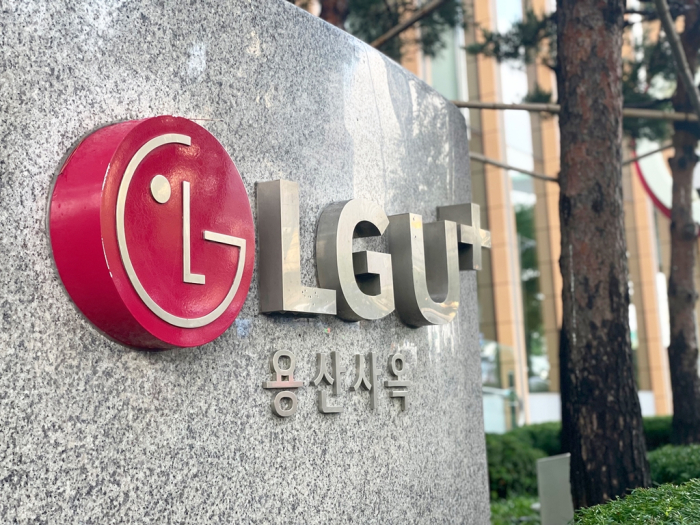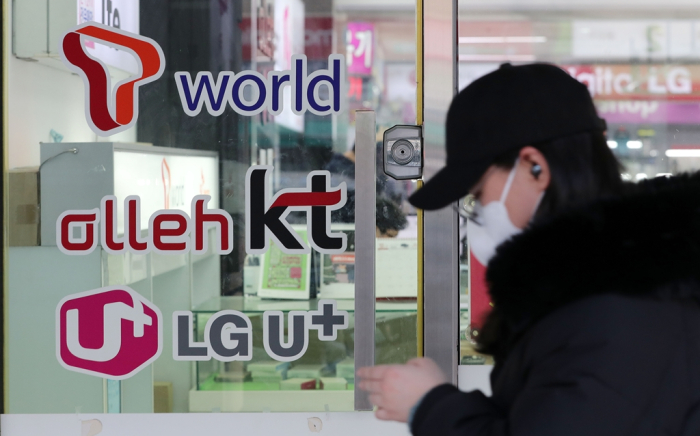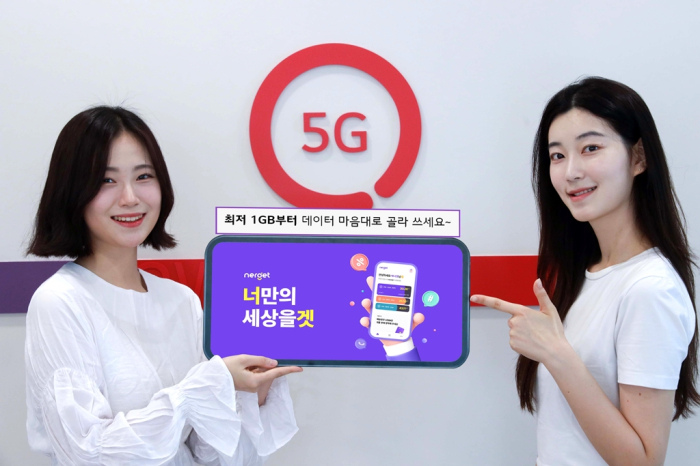LG Uplus set to catch up to KT as Korea’s No. 2 mobile carrier
LG has launched several alternatives to pricey 5G services, narrowing its market share gap with KT
By Oct 13, 2023 (Gmt+09:00)
LG Chem to sell water filter business to Glenwood PE for $692 million


Kyobo Life poised to buy Japan’s SBI Group-owned savings bank


KT&G eyes overseas M&A after rejecting activist fund's offer


StockX in merger talks with Naver’s online reseller Kream


Mirae Asset to be named Korea Post’s core real estate fund operator



LG Uplus Corp., the perennial No. 3 mobile carrier in South Korea, is fast catching up to its closest rival KT Corp. to rank second just behind the domestic market leader, SK Telecom Co., soon.
According to data from the Ministry of Science and ICT, the number of LG’s mobile service subscribers reached 16.67 million at the end of August, accounting for 20.9% of the country’s total wireless subscription base.
With that figure, LG is still Korea’s third-largest mobile operator. KT, which also offers fixed-line services, had 17.1 million mobile users for a 21.4% market share at the end of August.
SK Telecom had 31.39 million users, controlling 39% of the market.
But the latest data showed LG’s market share gap with KT has narrowed to 0.5 percentage point. That compares with a gap of 1.6 percentage points at the end of 2022 when KT’s market share stood at 22.3% while LG controlled 20.7%.
If this trend continues, LG will overtake KT by year-end, industry watchers said.

MVNO, THE ULTIMATE WINNER
Among Korea’s three wireless operators, LG was the only established carrier that successfully defended the harsh offensive by cheaper service operators known as MVNOs.
An MVNO, short for mobile virtual network operator, is a wireless communications services provider that does not own the wireless network infrastructure over which it provides services to its customers.
Mobile users, particularly young people, are increasingly seeking cheaper alternatives with MVNO operators, moving away from pricey 5G subscriptions provided by SK, KT and LG.
Data showed the number of MVNO users, or budget service users, steadily increased to account for 18.7% of Korea’s total subscription base at the end of August from 11.4% at the end of 2019.
LG’s mobile market share increased to 20.9% from 20.4% over the same period, while KT’s share fell to 21.4% from 26%. SK Telecom’s market share broke the 40% level for the first time to stand at 39%, down from 42.2%.

NERGET: LG’S AGGRESSIVE MARKETING
Industry officials said LG Uplus has ramped up its marketing offensive by expanding LTE, or long-term evolution, services, which are relatively inexpensive than 5G services, targeting young consumers.
LG added 280,000 new LTE subscribers to 10.19 million at the end of August from 9.91 million users at the end of 2022.
Over the same period, SK Telecom’s LTE subscriber base shrank by 800,000 while KT’s LTE subscriber numbers declined by 600,000.
“LG Uplus has aggressively increased the number of LTE lines focused on the Internet of Things. The move may not improve its profitability significantly but marketing-wise, the increased subscriber base means a lot,” said an industry official.
Earlier this month, LG rolled out 16 different data subscription plans on its new app Nerget tailored to the diverse needs of budget-conscious young users.
The company plans to launch an 11 GB rate plan next month, targeting users aged 19 to 29, to compete with similar mobile products by MVNO operators.
Write to Ju-Hyun Lee at 2juhyun@hankyung.com
In-Soo Nam edited this article.
-
 Chief ExecutivesKim Young-shub, ex-LG CNS chief, to lead Korea’s telecom giant KT
Chief ExecutivesKim Young-shub, ex-LG CNS chief, to lead Korea’s telecom giant KTAug 30, 2023 (Gmt+09:00)
3 Min read -
 Tech, Media & TelecomLG Uplus’ platform push gains traction with active venture funding
Tech, Media & TelecomLG Uplus’ platform push gains traction with active venture fundingAug 28, 2023 (Gmt+09:00)
3 Min read -
 Tech, Media & TelecomS.Korea’s LG Uplus, Dell to develop open RAN platform tech
Tech, Media & TelecomS.Korea’s LG Uplus, Dell to develop open RAN platform techFeb 26, 2023 (Gmt+09:00)
1 Min read -
 EarningsLG Uplus narrows operating profit gap with bigger rivals in 2022
EarningsLG Uplus narrows operating profit gap with bigger rivals in 2022Feb 03, 2023 (Gmt+09:00)
3 Min read -
 Electric vehiclesLG Uplus enters Korea’s EV charging service market with VoltUp app
Electric vehiclesLG Uplus enters Korea’s EV charging service market with VoltUp appDec 22, 2022 (Gmt+09:00)
2 Min read -
 Tech, Media & TelecomLG Uplus' K-pop idol platform goes global via smart TVs
Tech, Media & TelecomLG Uplus' K-pop idol platform goes global via smart TVsSep 06, 2022 (Gmt+09:00)
2 Min read -
 MetaverseSK Telecom steps up metaverse push with Morph Interactive purchase
MetaverseSK Telecom steps up metaverse push with Morph Interactive purchaseApr 14, 2022 (Gmt+09:00)
1 Min read


